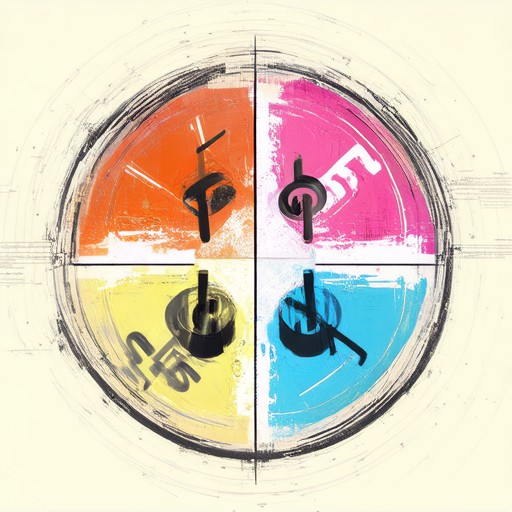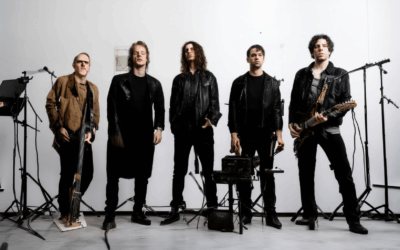Effective music marketing is the cornerstone of building a successful career in the ever-evolving entertainment industry. In 2024, the landscape of music promotion has shifted dramatically, requiring artists, labels, and promoters to adapt to new trends and technologies. This comprehensive guide delves into the essential strategies that separate successful music marketing campaigns from those that fall short. By exploring the 4 Ps of music marketing—Product, Price, Place, and Promotion—we will examine how these elements converge to create compelling campaigns that resonate with audiences and achieve long-term success. From leveraging social media and streaming platforms to crafting innovative marketing tactics inspired by industry leaders like Taylor Swift, this article offers actionable insights and real-world examples to help you stay ahead in the competitive world of music.

What Are the 4 Ps of Music Marketing?
The 4 Ps of music marketing are a fundamental framework used to guide successful music promotion. These Ps stand for Product , Production , Placement , and Promotion . Understanding each component is essential for artists and labels aiming to maximize their music’s impact and reach.
1. Product
The product in music marketing refers to the music itself. This includes the songs, albums, EPs, or singles you release. To succeed, your product needs to be high-quality and resonate with your target audience. Consider factors like songwriting, production quality, and uniqueness. A great product can set the foundation for long-term success.
2. Production
Production involves the technical aspects of creating your music. This includes recording, mixing, and mastering. High-quality production ensures your music sounds professional and stands out. Invest in good equipment and collaborate with skilled engineers to achieve a polished sound that aligns with your vision.
3. Placement
Placement refers to where your music is distributed and heard. This could be through streaming platforms like Spotify, Apple Music, or YouTube. Effective placement ensures your music reaches the right audience. Work with distributors who can help you target specific markets or genres to maximize visibility.
4. Promotion
Promotion is the strategic effort to make your music known to potential fans. This includes social media campaigns, partnerships with influencers, radio airplay, and live performances. Building a strong online presence, engaging with fans, and leveraging viral marketing tactics can significantly boost your music’s exposure.
By focusing on these four Ps—Product, Production, Placement, and Promotion—you can create a cohesive strategy to promote your music effectively. Each element plays a vital role in ensuring your music reaches and resonates with your intended audience.
Effective Music Marketing Strategies Without High Costs
To effectively market your music without spending thousands of dollars, focus on a combination of online presence, strategic networking, and creative promotion. Here’s a step-by-step guide to help you get started:
1. Build a Strong Online Presence
- YouTube Channel:** Create a YouTube channel dedicated to your music. Upload high-quality music videos, behind-the-scenes content, and covers of popular songs to attract viewers and subscribers.
- Optimize for SEO:** Use descriptive titles, tags, and descriptions that include relevant keywords to improve visibility in search results.
- Social Media Platforms:** Utilize platforms like Instagram, TikTok, and Twitter to share your music, updates, and engage with fans. Post short-form videos, sneak peeks, and interactive content to capture attention.
2. Distribute Your Music Widely
- Spotify & Other Streaming Platforms:** Get your music listed on major platforms like Spotify, Apple Music, and Amazon Music. Use services like DistroKid or TuneCore to distribute your tracks affordably.
- Independent Radio Stations:** Submit your music to independent online radio stations and curated playlists for potential airplay and exposure.
3. Leverage Social Media Marketing
- Run Targeted Ads:** Invest in cost-effective ads on platforms like Facebook, Instagram, and Google to promote your music to niche audiences who are likely to enjoy it.
- Engage with Fans:** Respond to comments and messages on your social media accounts to build a loyal fan base. Host live Q&A sessions or streams to interact with your audience.
4. Collaborate with Others
- Partner with Influencers:** Collaborate with micro-influencers in your genre to reach a targeted audience. Reach out via social media or email to propose collaborations.
- Work with Other Artists:** Partner with fellow musicians to co-create tracks or remixes, which can expose your music to new audiences.
5. Seek Press and Reviews
- Submit to Music Blogs:** Pitch your music to blogs and websites that cover indie and unsigned artists. Provide press releases and high-quality press kit materials.
- Get Featured on Platforms:** Aim to get featured on platforms like SoundCloud, Mixcloud, or Bandcamp to gain traction and exposure.
6. Engage with Your Audience
- Email Marketing:** Build an email list by offering incentives like free downloads or exclusive content. Send regular newsletters to keep fans engaged.
- Participate in Forums:** Join music-related forums and communities to network, share your music, and participate in discussions.
7. Explore Monetization Opportunities
- Patreon & Supporters:** Once you have a dedicated fan base, consider platforms like Patreon to fund your music projects and gain additional revenue.
- Live Performances:** Start performing at local venues or online events to connect with fans and build a reputation as a live performer.
8. Network and Attend Events
- Local Events:** Attend local music events, festivals, and showcases to network with other artists, promoters, and fans.
- Virtual Events:** Participate in virtual music conferences and webinars to learn from industry professionals and gain valuable insights.
9. Create a Brand Identity
- Visual Identity:** Develop a unique brand identity with a logo, color scheme, and typography that reflects your music and personality.
- Professional Website:** Build a simple website to showcase your music, bio, and contact information. Include links to your social media profiles and streaming platforms.
10. Stay Consistent and Adapt
- Consistency is Key:** Regularly update your online presence, release new content, and engage with your audience to maintain momentum.
- Monitor Analytics:** Use free tools like Google Analytics and social media insights to track your progress and adjust your strategy accordingly.
By combining these strategies, you can effectively market your music while staying within budget. Remember, persistence and adaptability are crucial in achieving long-term success.

Best Music Marketing Strategy
Marketing your music effectively requires a multifaceted approach that combines digital promotion, strategic partnerships, and audience engagement. Here’s a comprehensive guide to help you achieve success in 2024:
- Build a Strong Online Presence
- Create professional social media profiles on platforms like Facebook , Twitter , and Instagram . Share your music, updates, and behind-the-scenes content consistently.
- Develop a website or landing page to showcase your music, bio, and contact information. Use tools like WordPress or Wix for easy setup.
- Upload your music to popular streaming platforms such as Spotify , Apple Music , and YouTube . Optimize your metadata to make your tracks discoverable.
- Leverage Streaming Platforms
- Understand the importance of playlist placement. Platforms like Spotify and Apple Music have curated playlists that can expose your music to larger audiences. Pitch your tracks to playlist curators or use services like Distro to help with placements.
- Engage with listeners by responding to comments and messages on your social media accounts and YouTube channel. Building connections with fans can lead to stronger support and advocacy.
- Engage Fans and Build Communities
- Host live performances or virtual concerts to connect with your audience. Use platforms like Facebook Events or YouTube Live .
- Start a fan club or newsletter to keep your supporters updated on new releases, tours, and exclusive content. Use tools like Mailchimp for email marketing.
- Run contests and giveaways to encourage fan participation. Promote your contest on social media and your website to maximize visibility.
- Monetize Your Music
- Explore revenue streams through platforms like SoundCloud and Spotify . Collectives and labels can offer better rates for monetization.
- Sell merchandise featuring your music or artist branding. Use print-on-demand services like Teespring or Redbubble .
- Collaborate with brands for sponsored content opportunities. Look for companies that align with your music style or message.
- Stay Updated on Trends
- Follow industry news and trends through platforms like Billboard , Rolling Stone , and Pitchfork .
- Attend or stream music conferences like SXSW and CMJ to network with other artists and professionals.
- Invest in learning tools like Udemy or Coursera for advanced music production and marketing knowledge.
By combining these strategies, you can effectively market your music and build a loyal fanbase. Remember to stay consistent, engage authentically with your audience, and continuously adapt to the evolving music landscape.

Taylor Swift’s Marketing Strategy
Taylor Swift employs a multifaceted marketing strategy that leverages her massive fan base and social media presence. Her approach includes:
- Digital Engagement:** Utilizing platforms like Instagram and TikTok to interact with fans, fostering a loyal community and real-time engagement.
- Tea Time Campaigns:** Releasing cryptic hints, or “Tea Time,” to excite fans and generate buzz about new music or projects.
- Strategic Music Releases:** Calculated timing for singles, albums, and re-recordings to control media cycles and maintain public interest.
- Collaborations:** Partnering with high-profile artists to broaden her appeal and introduce her music to new audiences.
- Official Website Content:** Providing exclusive content like videos, behind-the-scenes footage, and early access to music via her official website.
- Streaming Platforms:** Distributing music widely across services like Spotify and Apple Music to maximize reach and accessibility.
- Influence and Philanthropy:** Using her platform to advocate for causes, enhancing her image and connecting with compassionate fans.
Her marketing efforts are designed to be interactive, immersive, and fan-driven, ensuring consistent engagement and sustained popularity in the music industry.
How Does Taylor Swift Promote Her Music?
Taylor Swift employs a multifaceted marketing strategy to promote her music, leveraging her global fanbase, innovative use of technology, and collaborative relationships with major players in the music industry.
- Engagement on Social Media Platforms: Swift actively interacts with fans on platforms like Instagram, TikTok, and Twitter. By liking, commenting on, and reposting fan-created content, she fosters a strong connection with her audience, encouraging fan-generated content that spreads her music virally.
- High-Quality Music Videos: Her music videos are not merely promotional tools but artistic works that tell compelling stories, often going viral and earning widespread praise for their creativity and emotional depth.
- Collaborations with Major Artists: Taylor frequently collaborates with prominent figures in the music industry, such as Kendrick Lamar, Ed Sheeran, and Joe Alvin, to feature her songs in their works, expanding her reach to their fanbases.
- Livestreams and Performances: She hosts exclusive live performances and Q&A sessions on platforms like Twitch and YouTube Live, offering fans an intimate glimpse into her creative process and connecting with them in real-time.
- Strategic Use of Streaming Platforms: As one of the most streamed artists globally, Swift ensures her music is readily available on major platforms like Spotify, Apple Music, and Amazon Music, making her tracks accessible to millions worldwide.
- Diverse Marketing Strategies: From appearing on late-night talk shows to launching merchandise lines and fragrances, Swift uses every opportunity to reinforce her brand and music to the public.
Taylor Swift’s ability to adapt to new platforms and engage with her audience has solidified her status as a leading figure in the music industry, consistently finding innovative ways to promote her work and connect with fans.

Taylor Swift’s Marketing Genius
Taylor Swift has consistently demonstrated extraordinary marketing prowess, redefining how artists engage with their audience and manage their brand. Her strategies are not just about selling music—they’re about building lasting connections and fostering a loyal fanbase that transcends mere consumerism.
1. Community-Building Through Fan Engagement
Taylor Swift’s ability to cultivate a dedicated fanbase is unparalleled. From her early days as a teenager posting songs online to her current status as a global icon, she has consistently prioritized her fans. By interacting with them through social media, meet-and-greets, and exclusive content, she creates a sense of belonging that turns fans into lifelong supporters.
2. Integrated Campaigns Across Platforms
One of Taylor’s most brilliant strategies is the seamless integration of her music, tours, and branding. Her album releases are often preceded by teasers, videos, and merchandise drops, creating a buzz that keeps fans engaged. Her tours are not just concerts—they’re immersive experiences that reinforce her brand and storytelling.
3. Leveraging Social Media
Taylor Swift has mastered the art of social media marketing. Whether it’s TikTok dances, Instagram posts, or Twitter interactions, she uses platforms to share personal moments and connect with her audience. Her authenticity allows her to reach younger demographics while maintaining her core fanbase.
4. Collaborative Partnerships
Taylor’s willingness to collaborate with other artists and brands has expanded her reach. By featuring artists like Kendrick Lamar and Ed Sheeran, she introduces her music to new audiences and creates cross-promotional opportunities that benefit both parties.
5. Owns Her Brand
Unlike many artists, Taylor owns the masters to her music, giving her complete control over her brand. This ownership allows her to experiment with new projects and maintain creative integrity, further solidifying her position as a marketing trailblazer.
6. Philanthropic Image Building
Her philanthropic efforts, such as donating millions to charity and supporting LGBTQ+ rights, humanize her and present her as a relatable and compassionate artist. This aligns her brand with positive values, enhancing public perception and trust.
Conclusion
Taylor Swift’s marketing genius lies in her ability to create a holistic, fan-first ecosystem that extends beyond music. By combining strategic planning, authentic engagement, and innovative tactics, she consistently achieves record-breaking success and sets new standards for artist marketing.



0 Comments